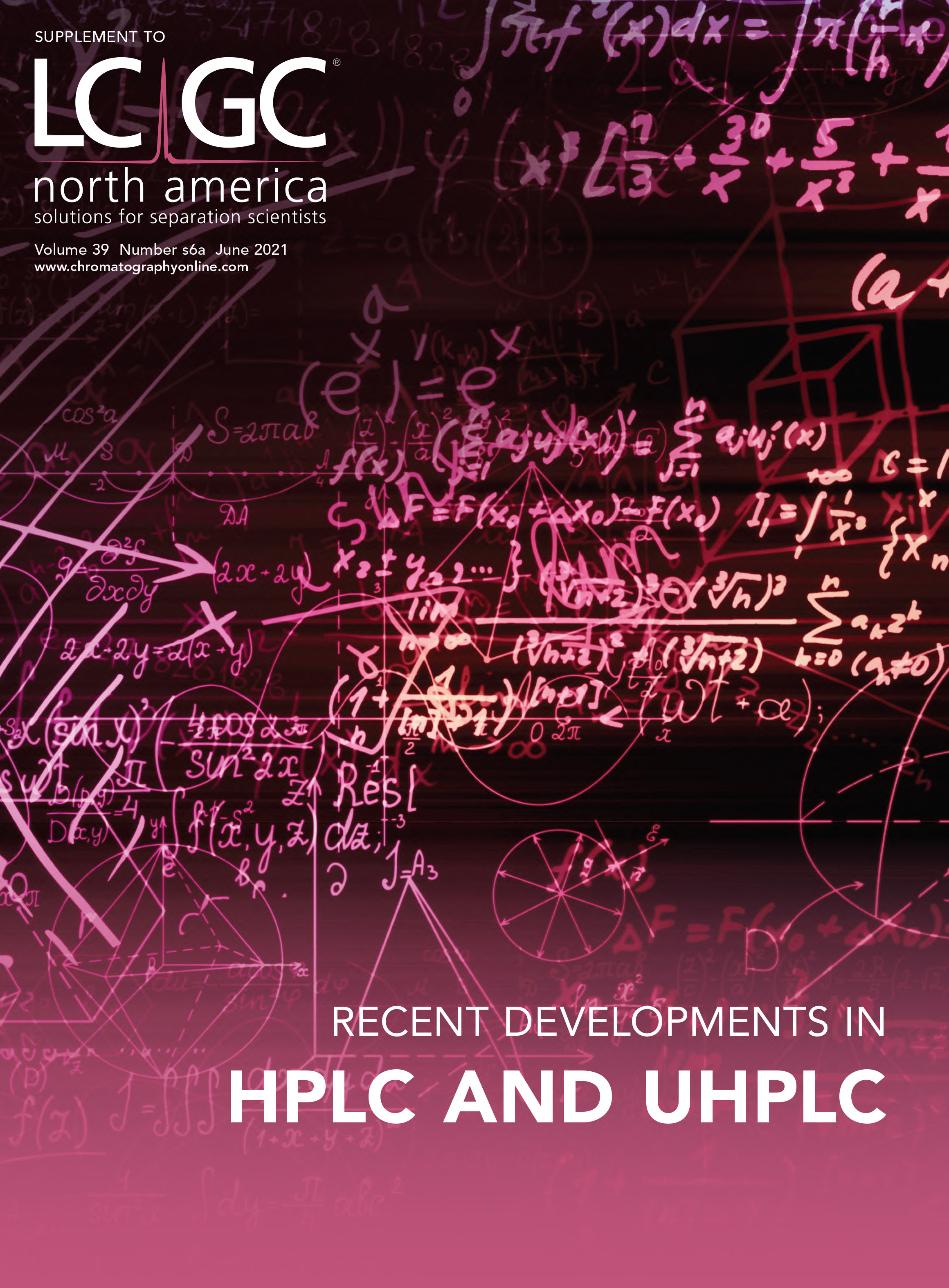Non-Targeted Analysis of PFAS in Surface Water Using Fragment Ion Flagging
LCGC Europe spoke to Stefan Van Leeuwen and Bjorn Berendsen from Wageningen Food Safety Research (WFSR), in Wageningen, The Netherlands, about their novel research into non-targeted screening of per- and polyfluoroalkyl substances (PFAS) in surface water using liquid chromatography high-resolution mass spectrometry (LC–HRMS) with fragment ion flagging (FIF).
Q. Why are per- and polyfluoroalkyl substances (PFAS) gaining so much attention at the moment and why is the analysis of these analytes important?
Stefan Van Leeuwen: PFAS are a class of chemicals that are extremely stable and resistant to degradation. Their surfactant properties give these chemicals unique characteristics for application in a wide array of products and processes. PFAS are used as surfactants for water and dirt repellency of clothing and furniture, as surfactants in aqueous fire fighting foams, for grease- and water-proofing food contact materials, and in many other applications. Unfortunately, their persistency and toxicity has become a major concern for society. The European Food Safety Authority (EFSA) recently evaluated that some specific PFAS show adverse effects on the immune system at low levels (1).
Bjorn Berendsen: Several pollution incidents in the USA, Europe, and Asia involving PFAS manufacturing plants polluting river water and drinking water, among other incidents, has brought the PFAS problem to the surface. Policy makers are now putting regulatory measures in place to regulate PFAS in products, the environment, food, and drinking water, and to stimulate the search for alternative chemicals.
Q. What techniques have been used to analyze these compounds historically, and do they have any limitations?
BB: The attention for these compounds started off in the early 2000s, with the targeted analysis of perfluorooctane sulfonic acid (PFOS) and perfluorooctanoic acid (PFOA). Labs, including Wageningen Food Safety Research (WFSR), mainly used liquid chromatography (LC) with triple quadrupole (QqQ) mass spectrometry (MS/MS) to achieve the desired selectivity and sensitivity (2,3). Gas chromatography tandem mass spectrometry ((GC)–MS/MS) methods were used for the highly fluorinated volatile PFAS. Over the years other PFAS were added and today some 20–40 compounds are analyzed routinely.
SVL: In the meantime, it became clear that PFAS is a very diverse group of chemicals, covering very different chemical families (4). Today, more than 4700 PFAS have been registered in an Organization for Economic Co-operation and Development (OECD) database (5), and several of these lead to environmental and human exposure through food and drinking water. Moreover, several PFAS can actually degrade abiotically and biotically through pathways yielding unknown intermediates. With these developments, the need for identification of unknowns became more apparent.
Q. Your team recently developed a method for the non-targeted analysis of per- and polyfluoroalkyl substances in surface water using liquid chromatography high-resolution mass spectrometry (LC–HRMS) with fragment ion flagging (FIF)?
SVL: That’s right. Together with a student, Thijs Hensema, we have developed this approach, as we felt that current approaches for non-target identification of unknown PFAS had some drawbacks that we wanted to get around. We called the approach fragment ion flagging (FIF) (6).
Q. What is fragment ion flagging and what benefits does it offer the analyst for this particular application?
BB: FIF is a method for the identification of unknown PFAS, by looking at the fragmentation patterns of these substances. Specific characteristic fragments of PFAS will then be used as a lead towards structural elucidation of the parent PFAS. We have developed and tested this FIF workflow, and the analyst can easily follow this stepwise procedure for identification of unknown PFAS. FIF can be used in any HRMS system (coupled to GC or LC) that allows the use of all ion fragmentation (AIF) and data independent acquisition (DIA).
Q. What sample preparation technique did you use?
SVL: Most studies so far were conducted on samples with relatively high levels of PFAS, for example, downstream from a manufacturing plant. We wanted to investigate the samples with background contamination that were likely to have lower contamination levels. To do so, we used solid-phase extraction (SPE), in our case a weak anion exchange SPE column, to isolate and concentrate anionic PFAS. This provided us with a 1000-fold concentration factor. In the future, we will expand this further to other isolation modes, such as cationic and mixed-mode isolation.
Q. What is novel about your approach and what benefits does it offer the analyst for this application compared to other techniques?
SVL: The methods applied so far for identification of unknown PFAS were based on full scan feature selection, such as homologue series detection, mass defect filtering, and intensity threshold filtering. Although these approaches have proven benefits, they come with some drawbacks. Homologue series detection only works in cases where the unknown PFAS are part of a homologue series. PFAS that do not fit in that definition may be missed out from the identification. Mass defect detection works well for highly fluorinated PFAS, but the mass defect will be counteracted if multiple hydrogens are present in a molecule. Threshold filtering is a way to reduce the number of signals, however, one may overlook small but relevant signals.
BB: After some brainstorming, we realized that we should make use of the typical fragments that originate from the ionization and fragmentation of several PFAS. This overcomes some of the drawbacks of the previously mentioned approaches. We have developed the FIF workflow and this includes five steps. First, we performed all ion fragmentation (AIF) and a full scan with the system we used. Secondly, we assessed the data screening for the typical fragments CnF2n+1, CnF2n-1, CnF2n-3, CnF2n-7, CnF2n-11 and CnF2n+1O or neutral loss. The third step was to select the corresponding precursor ion in the full-scan data, followed by step four, recording of the product ion mass spectrum of the precursor ion, and finally perform the structure elucidation.
Q. What were the main obstacles you had to overcome and how did you overcome them?
BB: We challenged ourselves by searching for PFAS in surface waters that were suspected to contain relatively low levels of PFAS. As a result we observed many interfering background signals, and selection of relevant signals for PFAS was hampered. By applying selective sample preparation to clean and concentrate the sample we were able to increase the signal intensity. By comparing sample extracts with different dilution factors we were able to eliminate background signals that originated from the instrument and solvents used. Altogether, we must also acknowledge that FIF does not guarantee that all PFAS present in a sample will be detected, but we were able to detect and identify several PFAS in the tested samples, of which some have never been reported before.
Q. What were your main findings?
SVL: With the FIF methodology we detected 40 structures in Dutch surface water, and we tentatively identified four new structures that were not reported before. Next to that, we identified fragments of what we believe are the larger molecular analogues of GenX (hexafluoropropylene oxide-dimer acid [HFPO-DA]). These are heavier analogues (hexafluoropropylene oxide-timer acid [HFPO-TrA], hexafluoropropylene oxide-tetramer acid [HFPO-TeA], and so on) that we have not previously detected in the regular targeted analysis. To me, this shows the strength of the FIF identification approach.
BB: For some of the PFAS structures, the final step of unambiguous identification by comparing with a reference standard could not be achieved, due to the lack of such a reference standard. This problem is faced more generally by non-target identification methods for pollutants, metabolites, and so on. Ideally, this will be solved by the synthesis of many new reference standards, but that is a very resource-demanding task.
Q. Are you planning to develop this research further?
SVL: Yes, we want to develop this process further, as there are still some challenges ahead. The process of data handling is quite labour intensive and could benefit from automation, which will stimulate a broader application. Furthermore, for many of the 4700 PFAS compounds, no reference standards are available, which hampers quantification. This is not a unique situation for PFAS, but broadly for non-target analysis, and we will investigate how to perform approximate quantification of these compounds where we don’t have access to reference standards.
BB: Also, we are aiming to apply FIF to food samples, which introduces an additional challenge as such samples are much more diverse and require more intensive sample clean-up.
Q. Could FIF be useful for other environmental (or food) applications?
SVL: We demonstrated FIF on surface water, and I’m confident that FIF will also work on other environmental matrices. Our next step is to apply it to foods, particularly those where foods were derived from animals exposed to PFAS, such as fish from Dutch rivers. Moreover, one can think of packaged foods where they are wrapped in food contact materials (FCMs) that have been treated with a wide range of PFAS in the past to make them water- and greaseproof.
Q. Will FIF become an important technique in PFAS analysis?
BB: PFAS contaminants will stay with us for a long time, and the need for identification tools will therefore remain. With FIF, a valuable identification approach is added to the non-target identification toolbox, which will also be applicable to other food and environmental contaminant fields.
References
1) EFSA Panel on Contaminants in the Food Chain (EFSA CONTAM Panel), “Scientific Opinion: Risk to human health related to the presence of perfluoroalkyl substances in food”, EFSA Journal 18(9), e06223 (2020).
2) M. Al Amin et al., Environ. Technol. 19, 100879 (2020).
3) B.J.A. Berendensen et al., Food Addit. Contam. 37(10), 1707–1718 (2020).
4) R.C. Buck et al., Integr. Environ. Asses. 7(4), 513–541 (2011).
5) OECD, Portal on Per and Poly Fluorinated Chemicals, http://www.oecd.org/chemicalsafety/portal-perfluorinated-chemicals/
6) T.J. Hensema et al., Chemosphere 265, 128599 (2021).
Stefan Van Leeuwen is a senior scientist at Wageningen Food Safety Research (WFSR, Wageningen, The Netherlands). During his Ph.D. on environmental analytical chemistry at the VU University in Amsterdam, he worked on method development for new persistent organic pollutants (POPs), such as brominated flame retardants and perfluoroalkyl substances (PFASs).

Bjorn Berendsen currently works at Wageningen Food Safety Research, Wageningen University and Research, The Netherlands. He has a background in Analytical Chemistry and his expertise is mainly in veterinary drug residues and perfluorinated alkyl substances in food and environmental matrices. He currently is statutory task programme manager for veterinary drugs.

Alasdair Matheson is the Editor-in-Chief for LCGC Europe. Direct correspondence to: amatheson@mjhlifesciences.com.

New Study Reviews Chromatography Methods for Flavonoid Analysis
April 21st 2025Flavonoids are widely used metabolites that carry out various functions in different industries, such as food and cosmetics. Detecting, separating, and quantifying them in fruit species can be a complicated process.
Extracting Estrogenic Hormones Using Rotating Disk and Modified Clays
April 14th 2025University of Caldas and University of Chile researchers extracted estrogenic hormones from wastewater samples using rotating disk sorption extraction. After extraction, the concentrated analytes were measured using liquid chromatography coupled with photodiode array detection (HPLC-PDA).

.png&w=3840&q=75)

.png&w=3840&q=75)



.png&w=3840&q=75)



.png&w=3840&q=75)





